Most WooCommerce store owners focus heavily on driving traffic but overlook a critical metric: the checkout conversion rate. A poorly optimized checkout process costs you sales and wastes your marketing budget. The good news? You can fix this with data-driven improvements.
In this guide, you’ll learn how to:
- Set up accurate conversion tracking
- Identify where customers drop off
- Implement proven checkout improvements
- Boost sales with strategic pricing and discounts
TL;DR: Track your conversion rate through Google Analytics, optimize your checkout flow, and use targeted discounts to increase sales.
How to measure WooCommerce conversions
Before improving your conversion rate, you need accurate tracking. Google Analytics 4 (GA4) is an indispensable tool for monitoring your store’s performance, and it’s free! To use it, however, you need to properly connect it to your WooCommerce site.
There are two ways to do this: By manually inserting a tracking code into your site’s header/PHP file within a child theme:
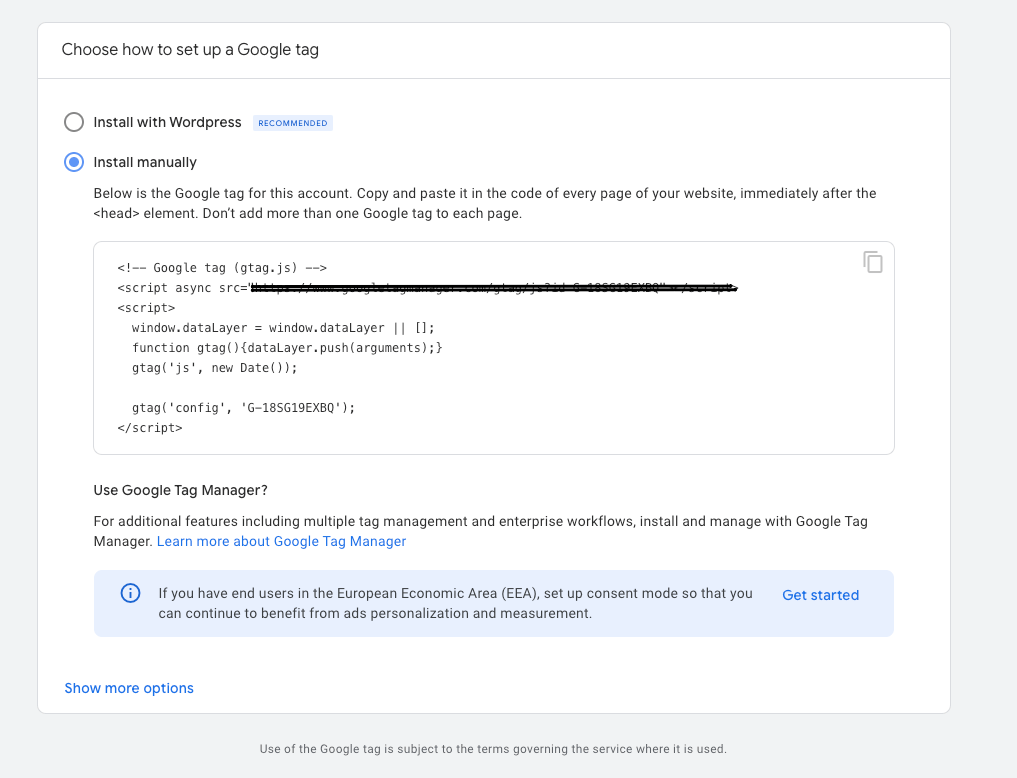
Or with a plugin like MonsterInsights, which is what most people choose as it’s easier:
- Create a GA4 property in your Google Analytics account with your store’s domain.
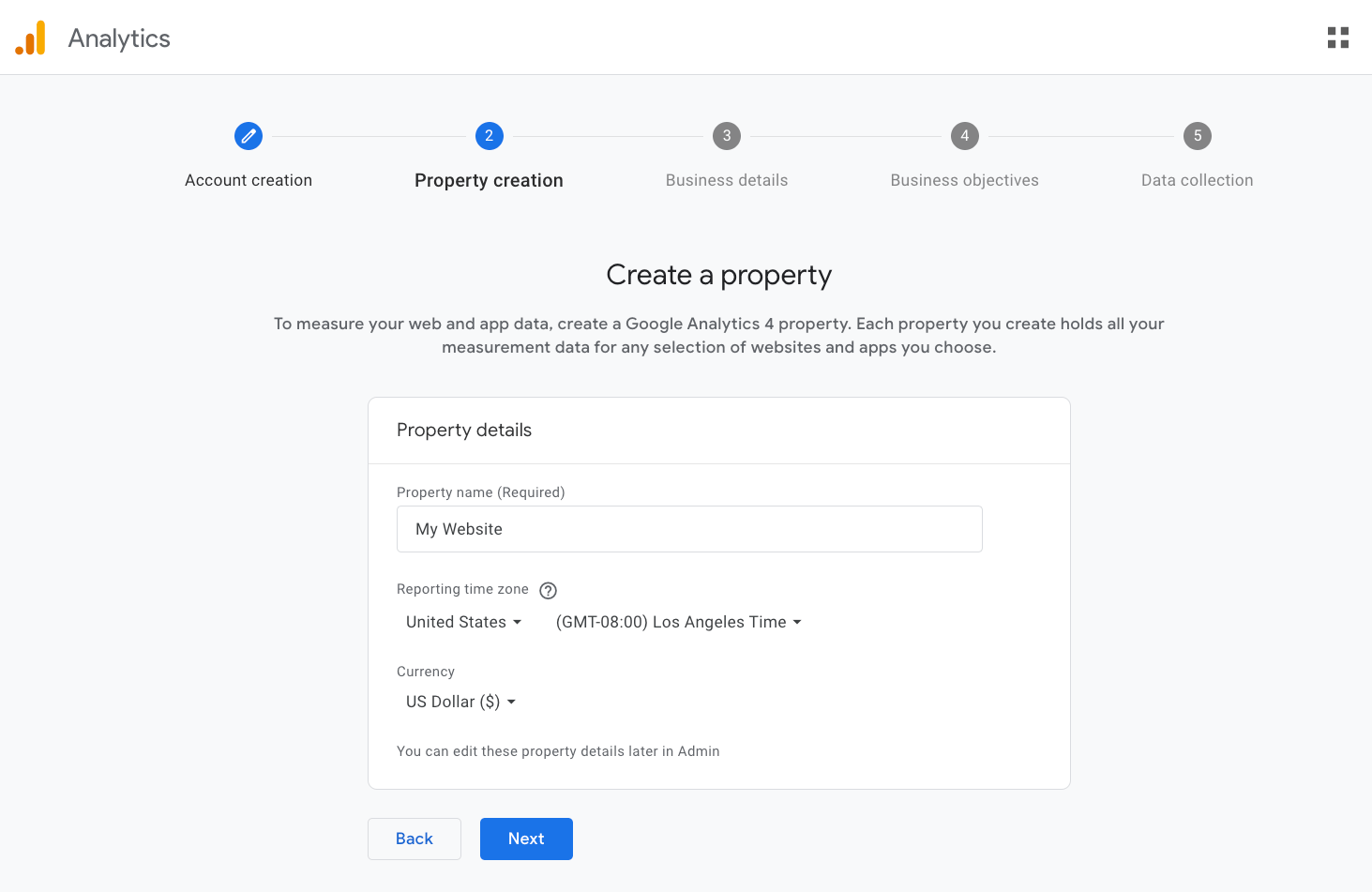
- Install the plugin and Connect MonsterInsights with your GA4 property.
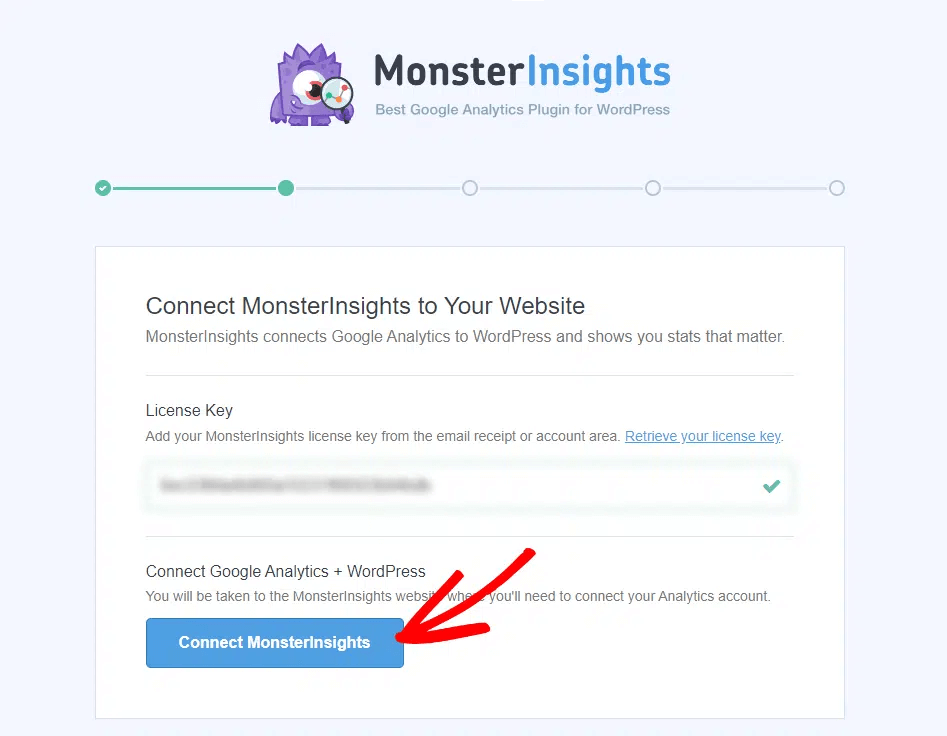
- Follow the installation wizard until you are prompted to log into your Google Account. Make sure to use the account connected to your business.
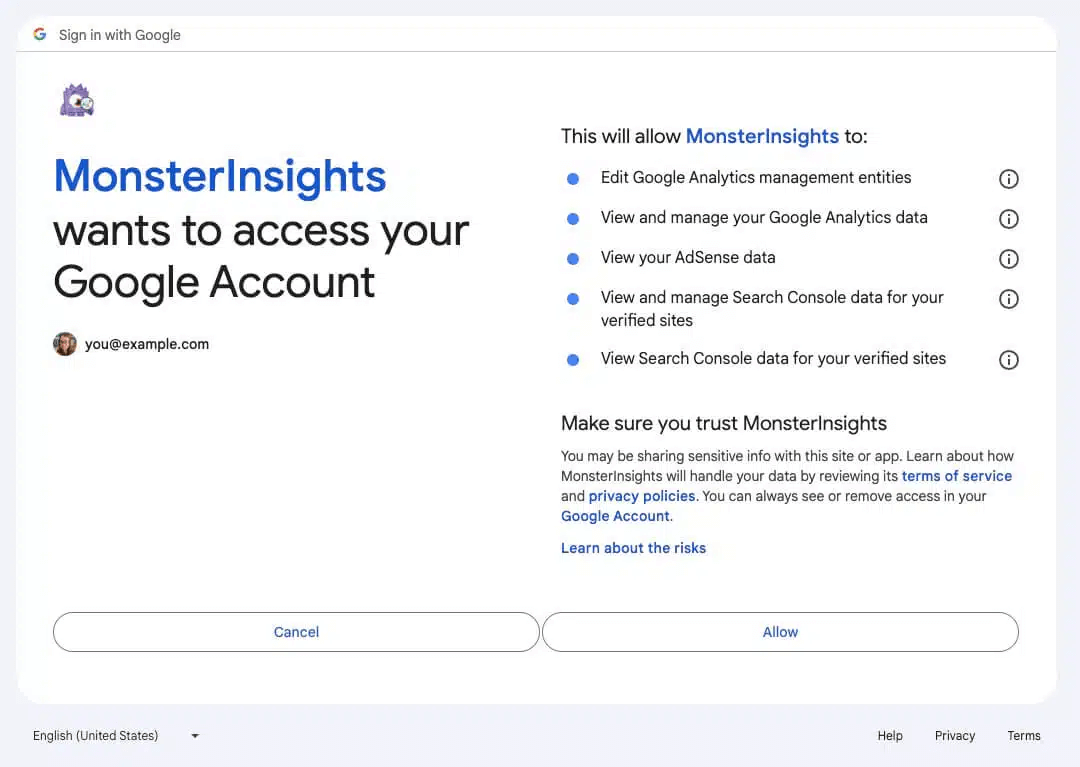
- Enable e-commerce tracking in MonsterInsights → Settings → e-commerce.
- You’re done! Now, you have a Google Analytics dashboard in your WordPress admin area.
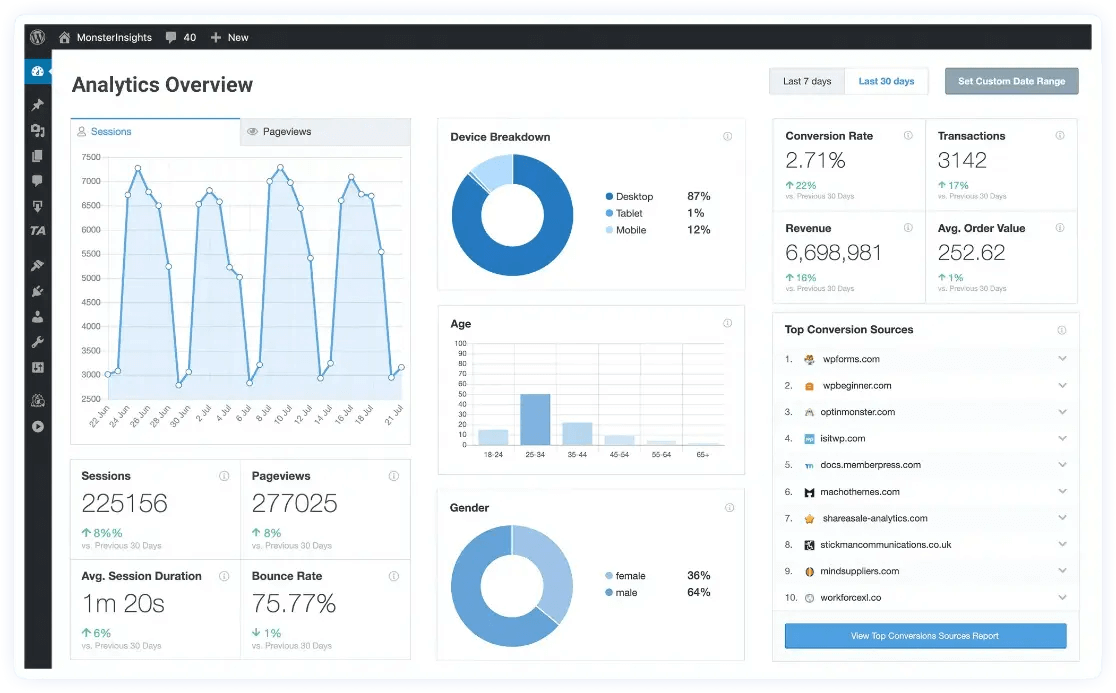
One of the most important metrics you can track there is your conversion rate: The percentage of visitors who make a purchase. The formula is simple: (Number of sales ÷ Total visitors) × 100 = Conversion rate
For example, if you had 100 sales from 5,000 visitors, your conversion rate would be 2%.
However, that’s not the only thing you need to monitor. To get the full picture, you also need:
- Cart abandonment rate: The percentage of users who add items to their cart but don’t purchase

- Average order value: Total revenue divided by number of orders
- Bounce rate: Percentage of visitors who leave without interacting
- Customer types: Ratio of new versus returning customers
To track these separately, you can create a custom GA4 dashboard:
- Go to Customization → Dashboards.
- Click “Create dashboard”.
- Add scorecards for each key metric.
- Set up automated weekly or monthly email reports.
Monitor these numbers regularly to spot trends and optimization opportunities.
High-impact ways to boost checkout conversions
Now, let’s look at proven strategies to increase your checkout completion rate, backed by real data and user behavior analysis.
Analyze and understand customer behavior
Research suggests that the average e-commerce store can increase conversion rates by up to 35% “solely through design improvements to the checkout page”. This shows how essential it is to analyze how customers interact with your website, especially the checkout process.
Install a tool like Hotjar to create heatmaps that show exactly where customers click, scroll, and get stuck.
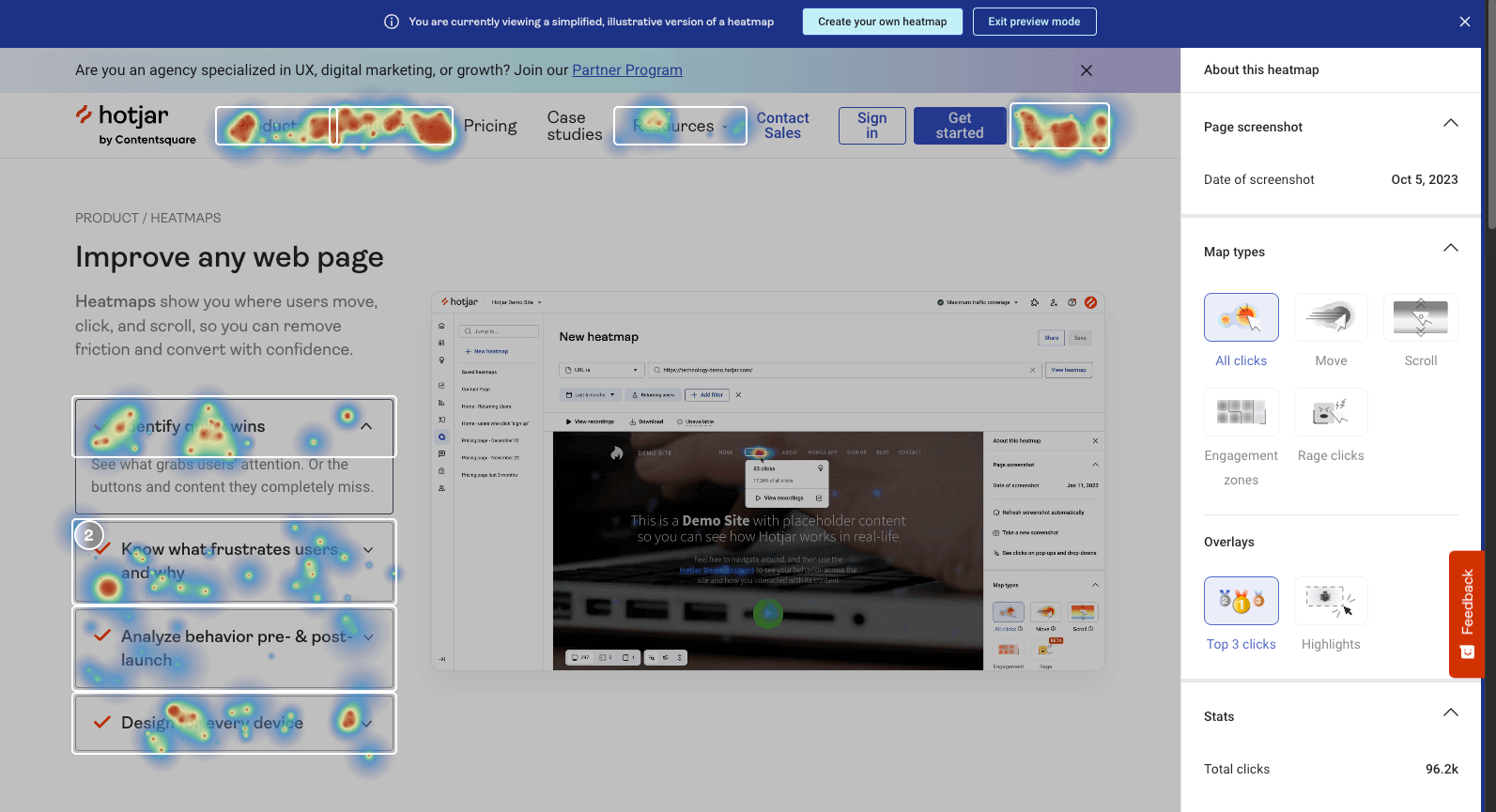
For example, if you see that there is an important button below the fold that’s barely been used, you might find a better place to position it.
Next, you should track your checkout’s time-to-purchase metric – if your checkout process takes more than 3 minutes, you’re likely losing sales.
Besides tools and analytics, you could also look for improvements through customer feedback. You can have a pop-up on the order confirmation screen to ask how easy the process was or send them a post-purchase survey with a small discount on their next purchase as an incentive for completing it. This qualitative data complements your analytics and helps identify friction points you might miss otherwise.
Streamline the checkout experience
Minimize the required checkout fields by keeping only the essentials, such as name, email, shipping address, and payment details. According to research by the Baymard Institute, the average number of checkout steps has consistently been 5 since 2012, so don’t exceed that.

It’s also recommended that you enable guest checkout in WooCommerce (Settings → Accounts & Privacy → Allow customers to place orders without an account).
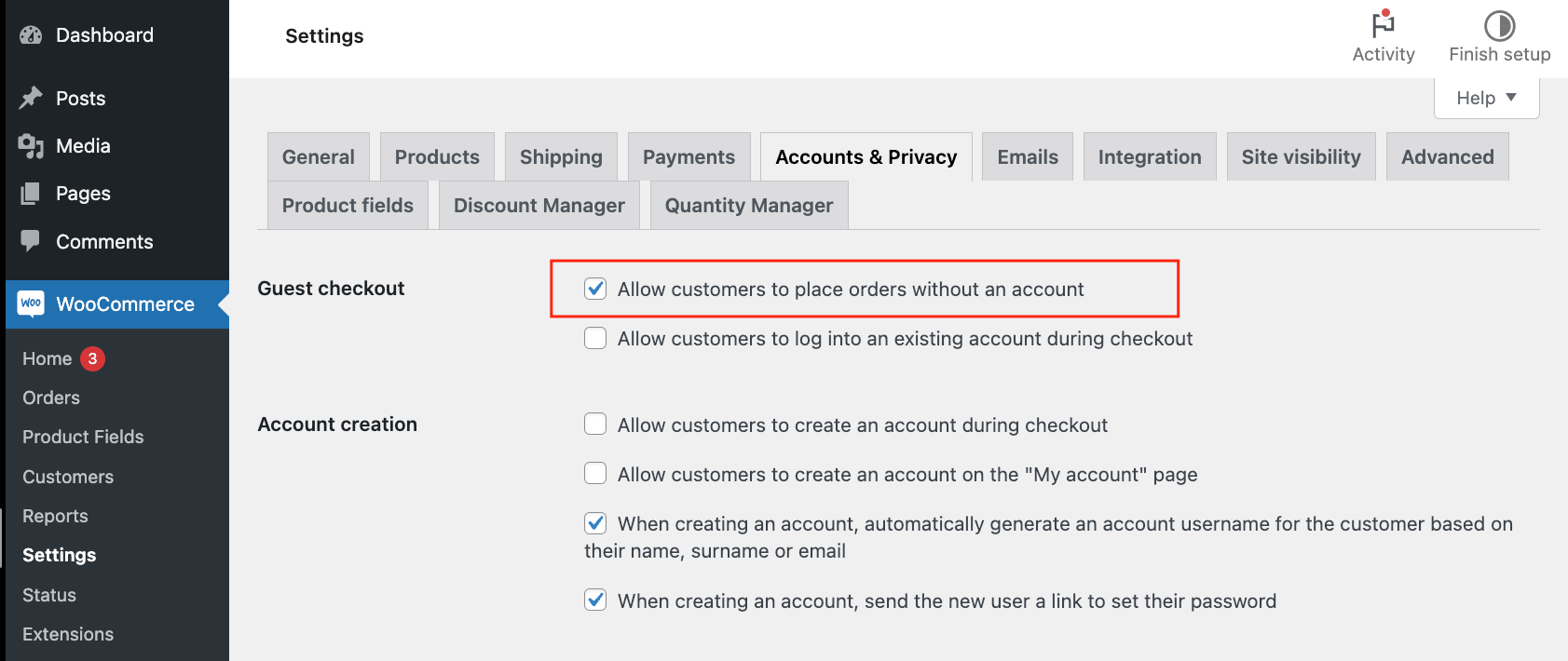
After all, people shouldn’t be forced to create an account for every website they purchase from. The guest checkout option removes a major barrier while still allowing you to capture customer emails for marketing – but make sure you’re properly following compliance laws, such as GDPR in the UK and Europe, if you do this.
Build trust with payment options
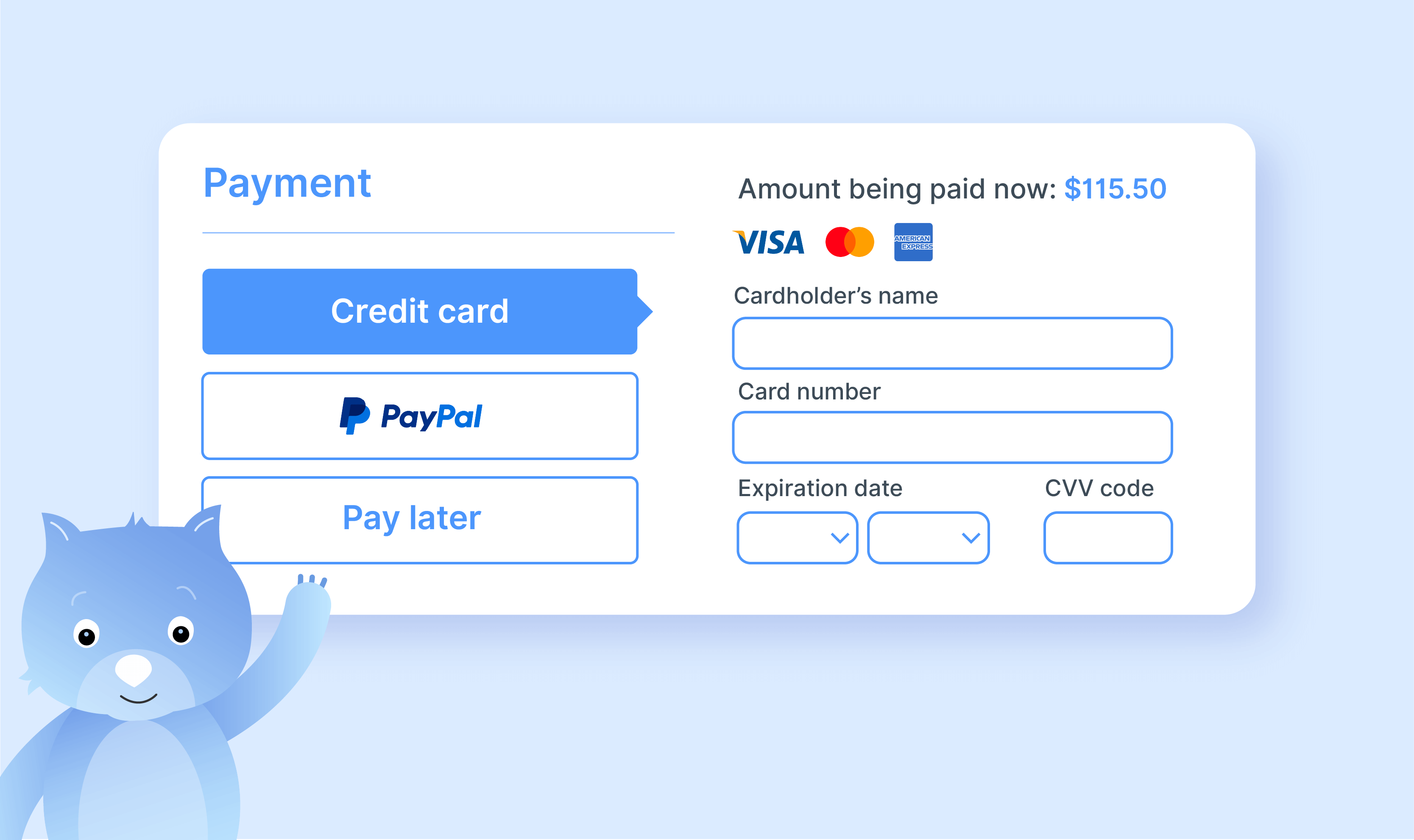
Providing multiple payment methods is crucial if you want to increase customer trust as well as how user-friendly your checkout process is. Customers expect having several payment methods to choose from:
- Credit/debit cards
- PayPal
- Digital wallets (Apple Pay, Google Pay)
- Buy now, pay later services
Other essential elements include security badges, SSL certificates, and store ratings. And if you’re targeting a global audience, install WooCommerce Currency Switcher to automatically show prices in your customer’s local currency, so they don’t experience the friction of having to mentally convert currencies.
Recover abandoned carts automatically
Just because your customers have abandoned their cart doesn’t mean that should be the end of their journey. Give them that extra push by reminding them of their cart through email. You can do this with an automated cart recovery system such as WooCommerce Cart Abandonment Recovery.
For example, you can create a different theme for each part of the email sequence:
- Reminder after 1 hour: “Your items are waiting.”
- Social proof after 24 hours: “Join X happy customers.”
- Discount offer after 48 hours: “Special offer to complete your purchase.”
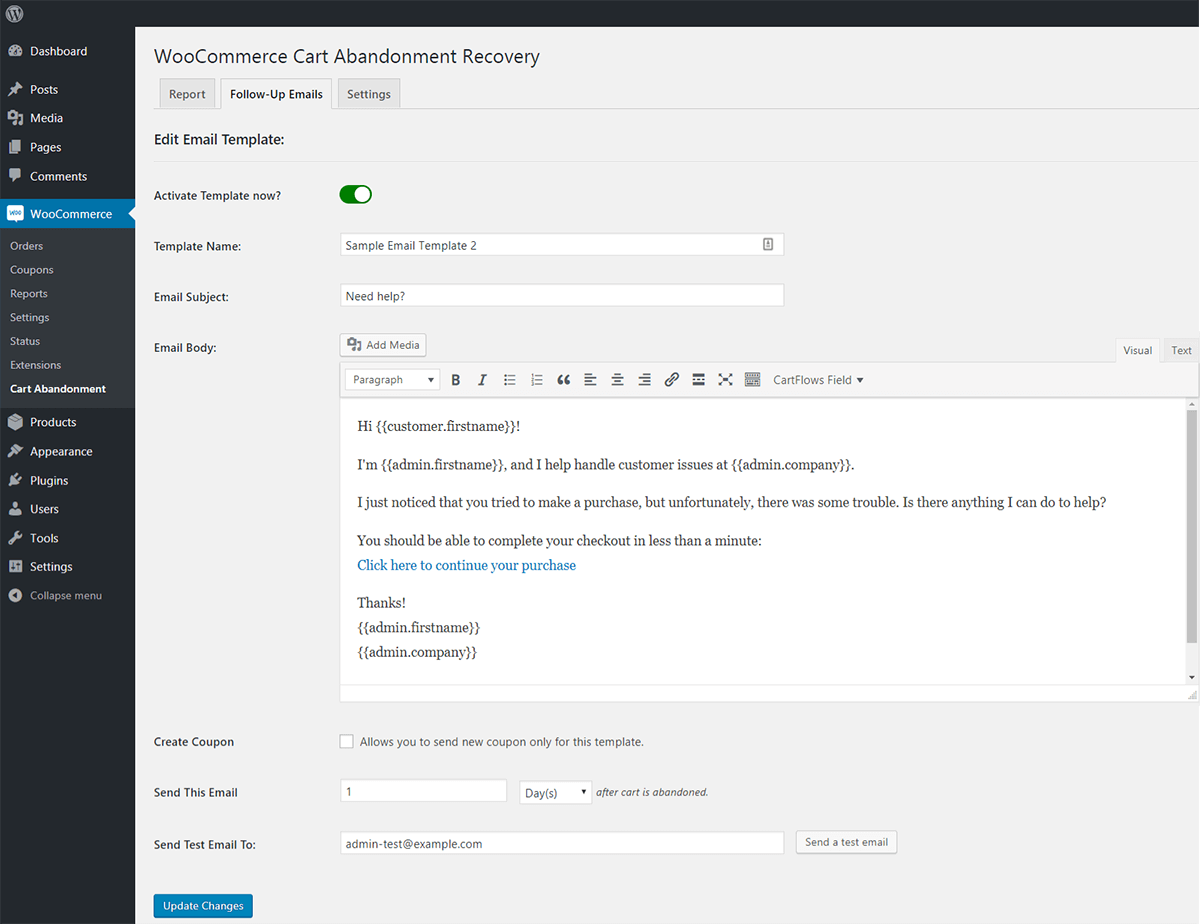
Ensure your product page is optimized for conversions
The checkout is the last step of the customer journey, but to improve its performance, you need to optimize the entire process, starting from your product pages.
Write clear, action-driving descriptions
Create product descriptions that answer customer questions before they ask:
- List exact measurements and specifications.
- Add clear pricing information, including any volume discounts.
- Link directly to shipping and return policies.
- Break text into scannable bullet points.
- Include social proof like reviews or testimonials.
Design a clean, purposeful layout
Structure your product page to guide customers toward purchase:
- Place the “Add to Cart” button prominently above the fold.
- Add a “Buy Now” option for direct checkout.
- Keep critical information (price, availability, options) visible without scrolling.
- Use white space effectively to prevent information overload.
Optimize visual elements
High-quality visuals build trust and reduce returns:
- Show multiple product angles in your image gallery.
- Include close-up shots of important details.
- Compress images to maintain fast loading speeds.
- Add product videos demonstrating items in use.
- Place size charts and specification tables in expandable sections.
Implement smart product customization
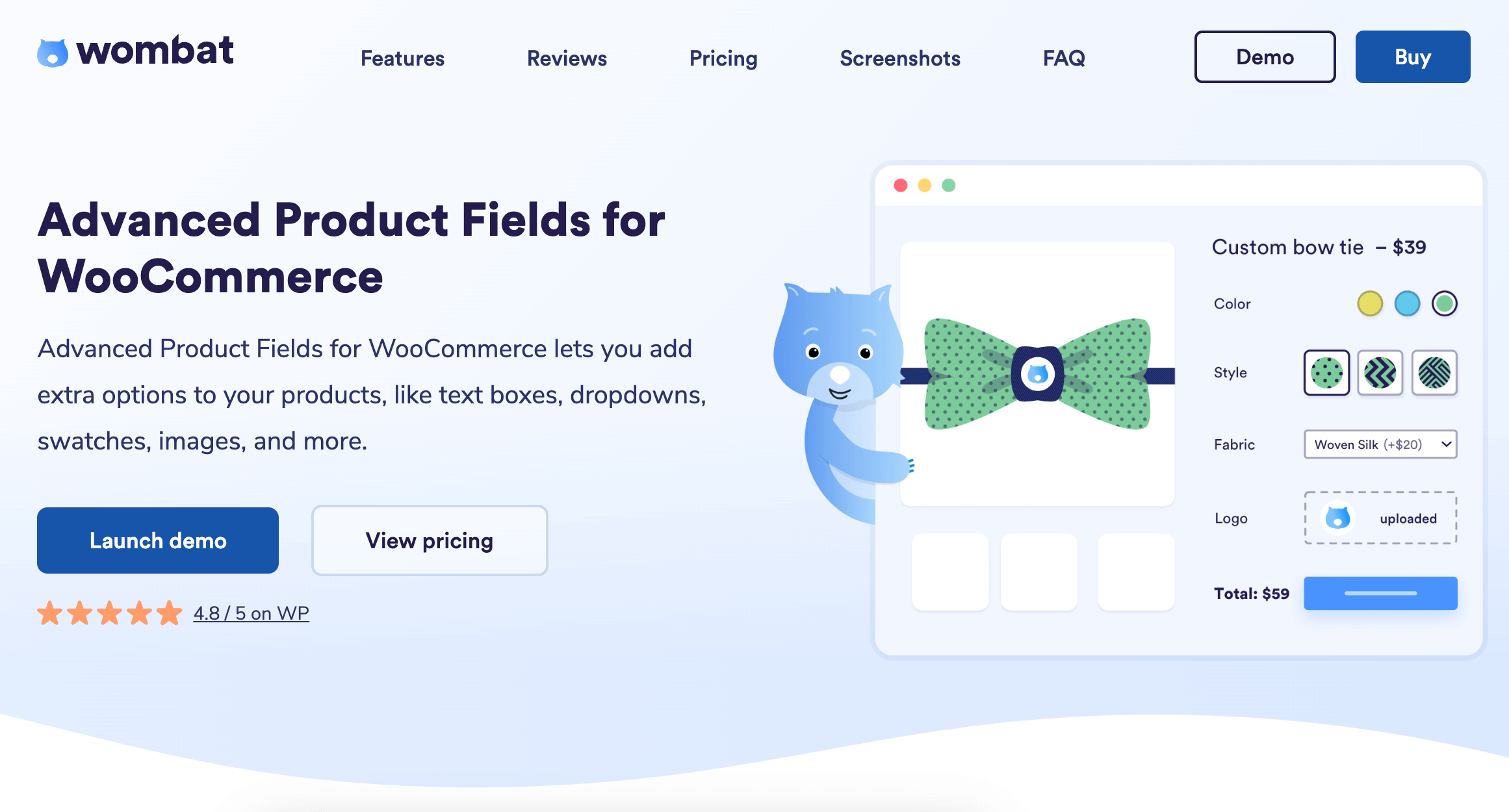
Use Advanced Product Fields for WooCommerce to create an intuitive customization experience:
- Show relevant options based on previous selections.
- Hide irrelevant choices to reduce confusion.
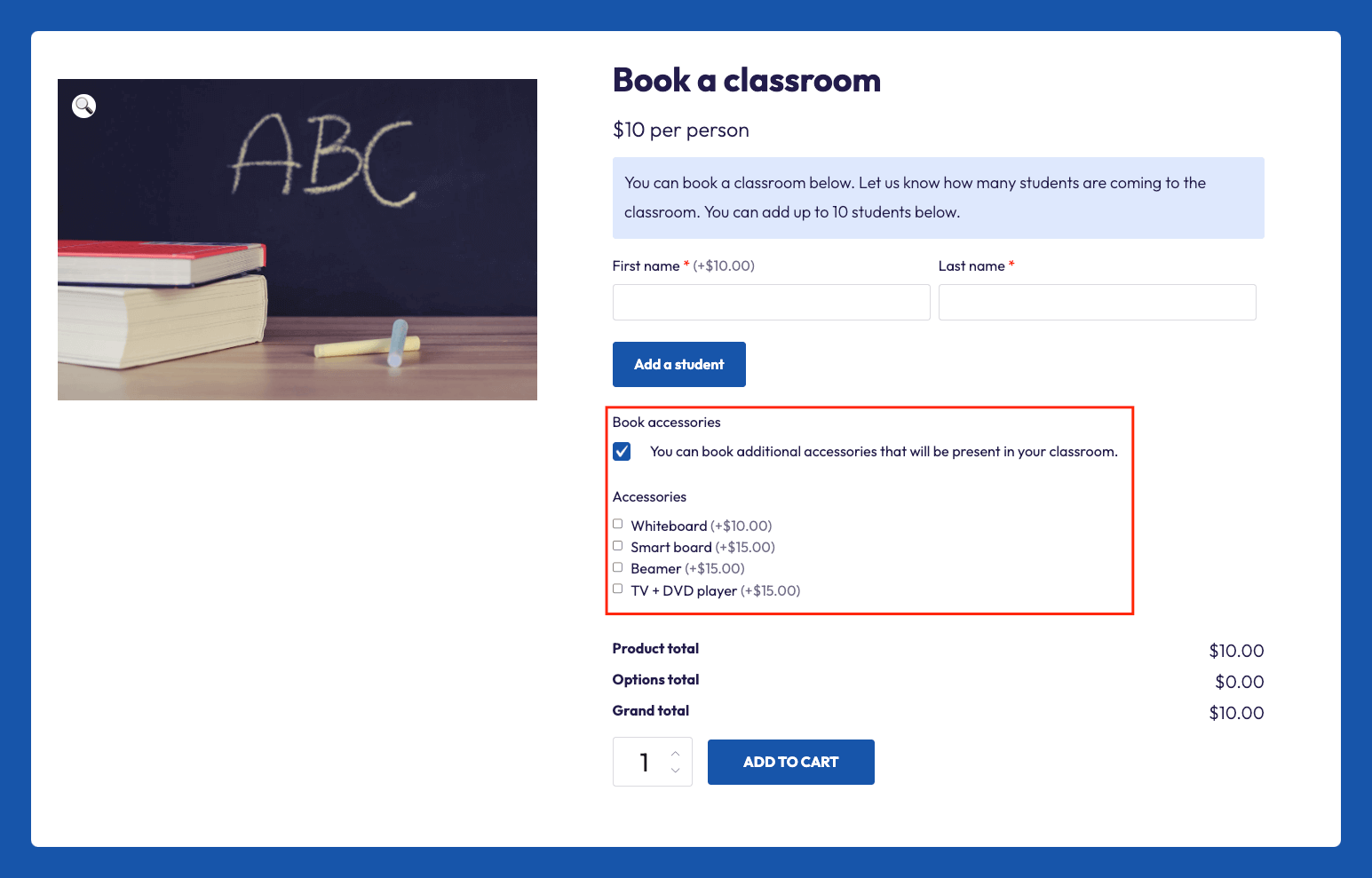
- Display price updates in real-time as options change.
- Allow file uploads for customized products.
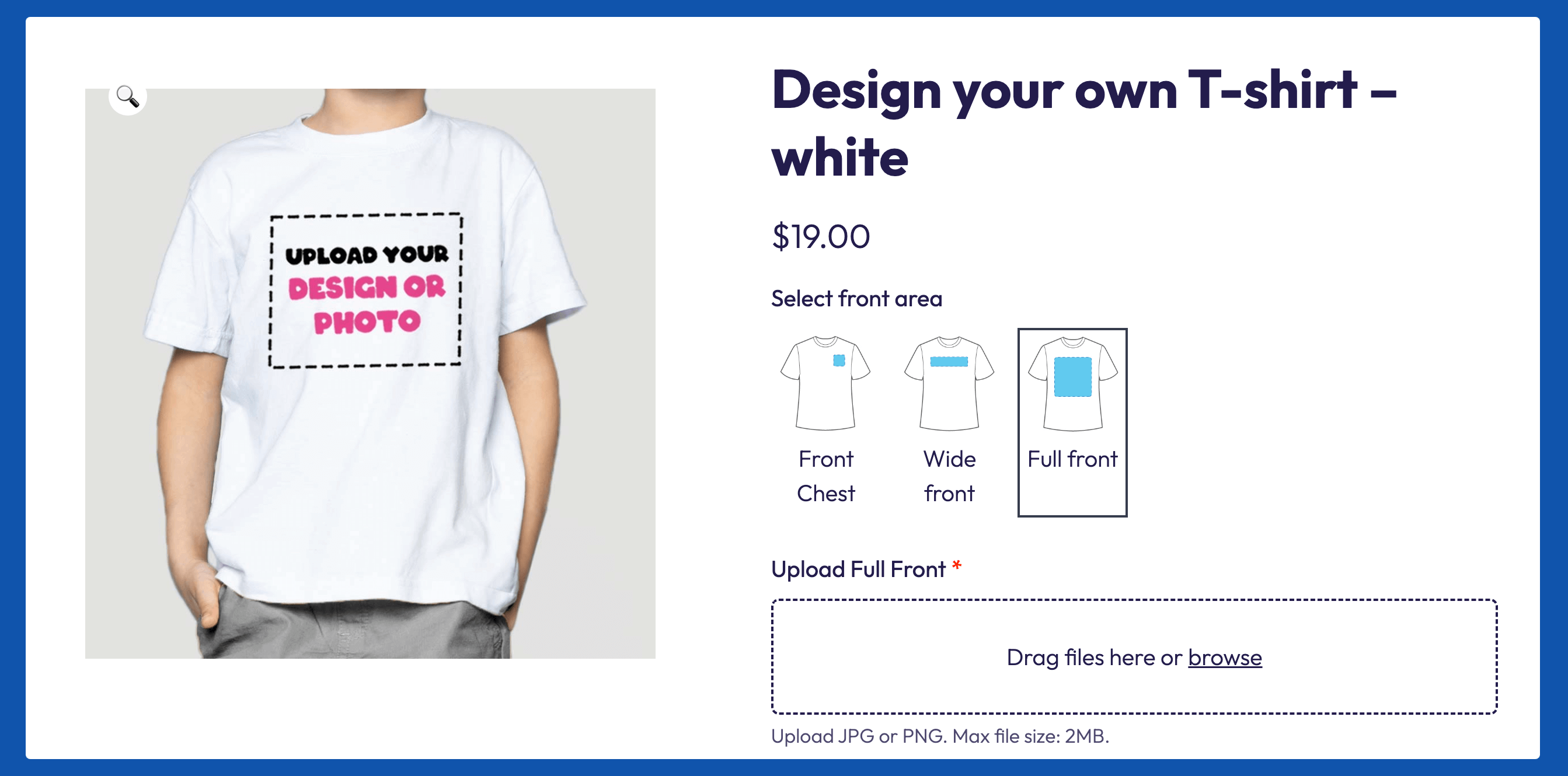
Create clear navigation paths
Help customers find and purchase products efficiently:
- Add breadcrumb navigation (Home → Category → Product).
- Structure URLs logically (domain.com/category/subcategory/product).
- Include clear category labels and tags.
Add personalized recommendations
Turn browsers into buyers with targeted suggestions:
- Display recently viewed items.
- Show related products based on browsing history.
- Add “Customers also bought” sections.
- Use purchase notifications to create urgency and add social proof.
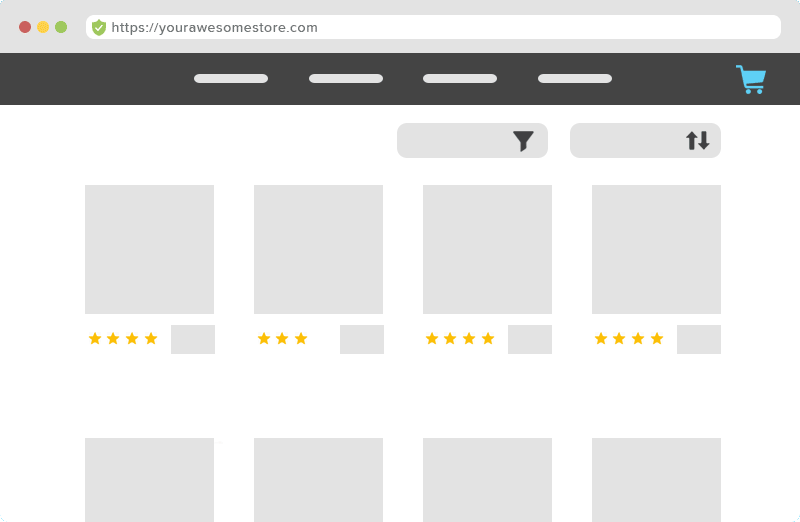
Optimize your mobile checkout experience
With over 60% of e-commerce sales happening on mobile devices, your mobile checkout needs to be flawless. Here’s how to optimize it:
Speed up mobile purchases with one-tap payment options:
- Enable Apple Pay for iOS users.
- Add Google Pay for Android devices.
- Integrate PayPal One Touch.
Fix common mobile frustrations:
- Configure form fields to auto-adjust when the keyboard appears.
- Make buttons large enough to tap easily (minimum 44×44 pixels).
- Place error messages where users can see them without scrolling.
Test your checkout on multiple devices and browsers:
- Different screen sizes (phones and tablets)
- Various Android versions
- Multiple iOS versions
- Popular browsers (Chrome, Safari, Firefox)
Track mobile-specific metrics in Google Analytics:
- Mobile checkout abandonment rate
- Most-used payment methods
- Average checkout completion time
- Error occurrence rates
Advanced strategies for long-term conversion growth
You can easily take your WooCommerce store’s performance to the next level by combining strategic discounts with trust-building elements. These advanced tactics work together to create sustained growth in your conversion rates.
Strategic discounts that drive purchases
Basic WooCommerce coupon codes add friction to the buying process – customers need to find, copy, and paste them correctly. The WooCommerce Discounts plugin removes this barrier by automatically applying discounts at the right moment.
Set up these proven discount types:
| Discount type | Examples |
| Flat storewide discounts | 20% off all products Category discounts (e.g. shoes only) Set minimum purchase amounts |
| Buy One Get One (BOGO) deals | Classic ”Buy 1 Get 1 Free” “Buy 2 Get 1 50% Off” Mix and match across product categories |
| Volume-based incentives | 5% off orders over $100 10% off orders over $200 Free shipping at specific thresholds |
| Time-sensitive promotions | Holiday season discounts Flash sales Birthday specials |
| Customer segment offers | First purchase discount Loyalty program tiers Bulk buyer pricing |
Use your analytics data to find the sweet spot for discount amounts. Check your average order value and profit margins to set discounts that drive sales while maintaining profitability.
Increasing social proof and trust with customers
Build customer confidence throughout the purchase journey:
- Place verified customer reviews near add-to-cart buttons and on checkout pages.
- Display your return policy clearly during the purchase process – 76% of UK shoppers check return policies before buying.
- Create a simple loyalty program that shows customers their progress toward rewards.
- Display recent purchases, showing that other customers trust your store.
- Highlight your most popular product combinations based on actual purchase data to help customers make confident buying decisions.
Supercharge your conversion rate with WooCommerce Discounts
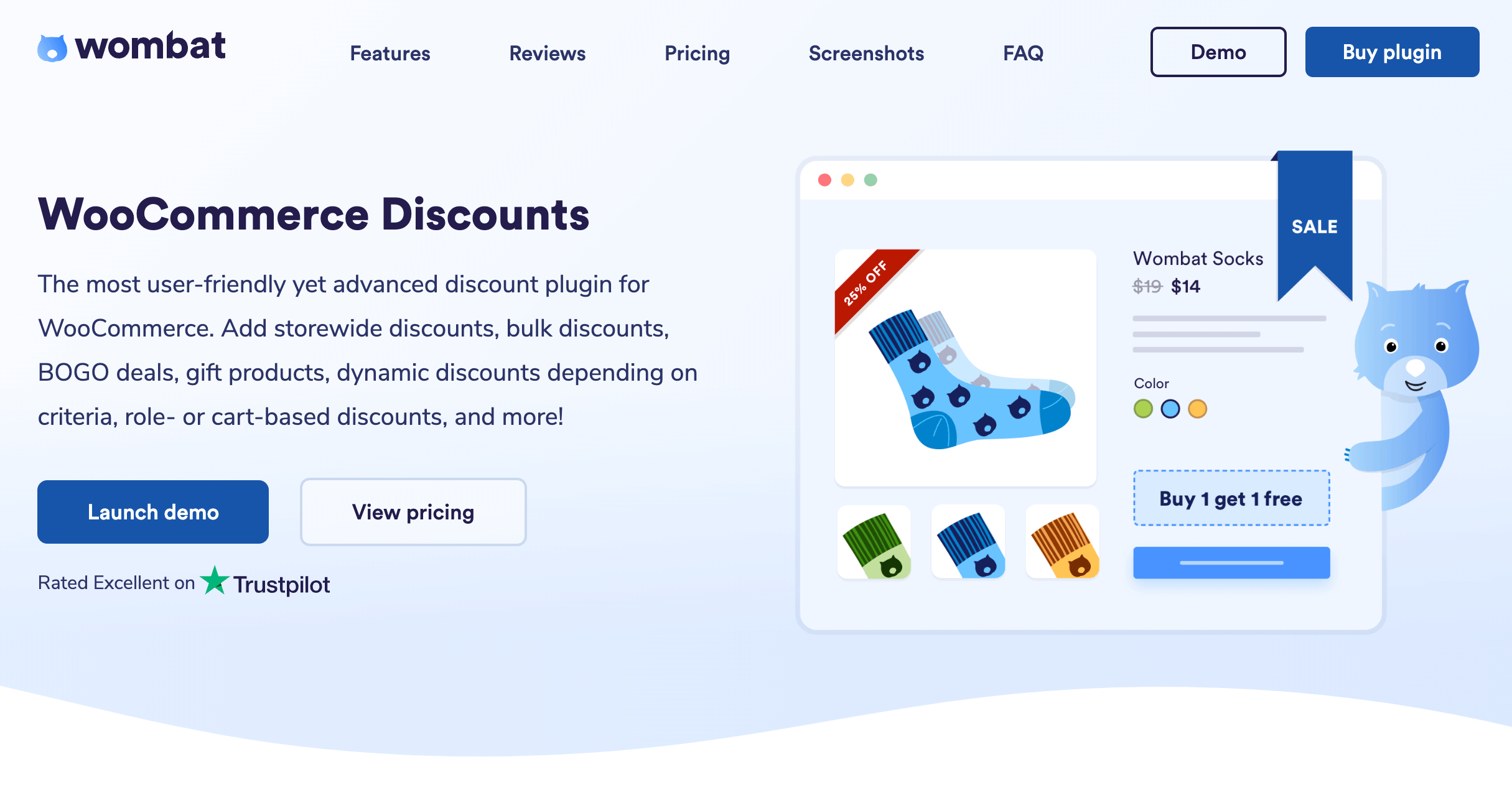
A strong conversion rate directly impacts your store’s success. By tracking your metrics and implementing the strategies we’ve covered – from optimizing your checkout process to building customer trust – you’ll see measurable improvements in your sales.
WooCommerce Discounts takes these improvements further by solving common conversion roadblocks:
- No more frustrated customers hunting for coupon codes
- Reduced cart abandonment with the automatic discount application
- Set-and-forget pricing rules that work 24/7
Transform your store’s performance with automatic discounts that work: Try WooCommerce Discounts today!
